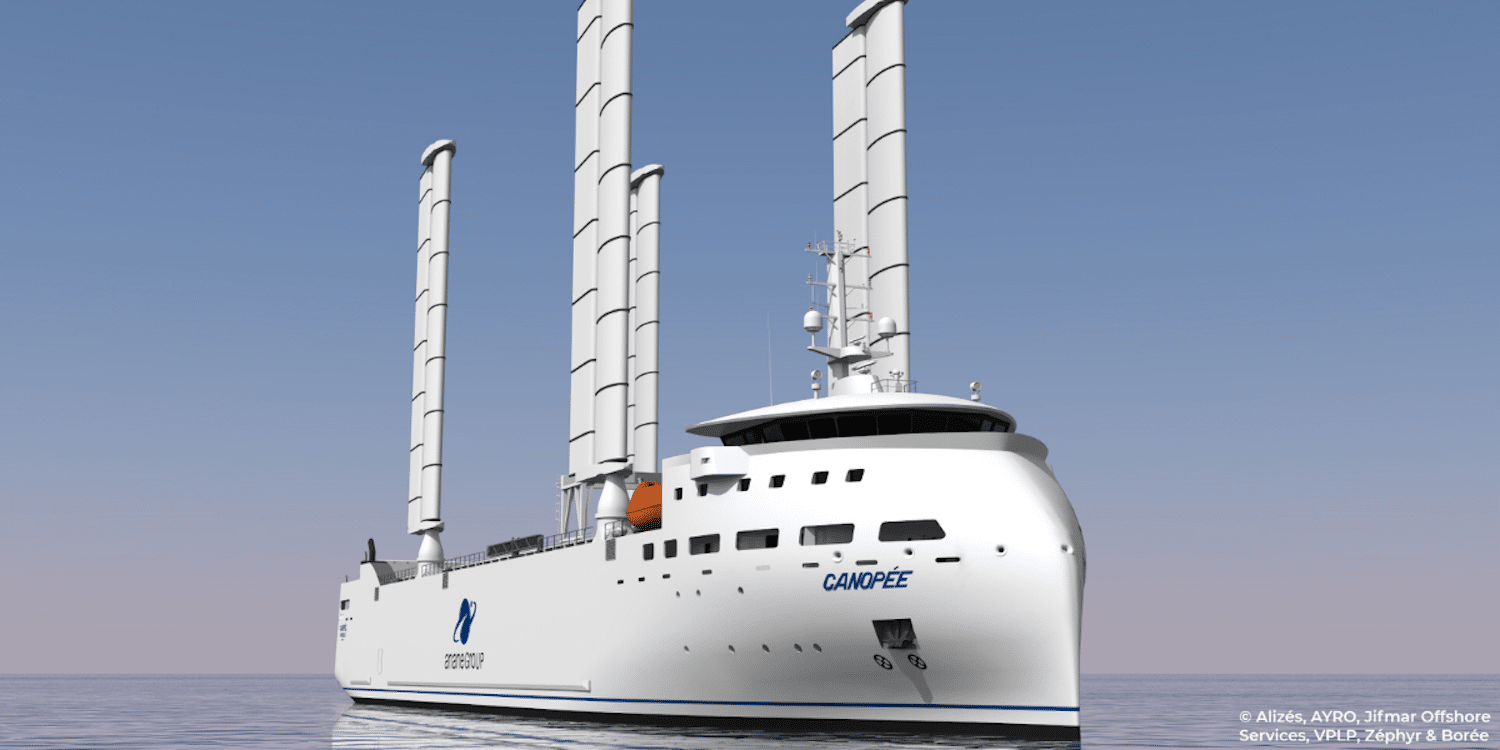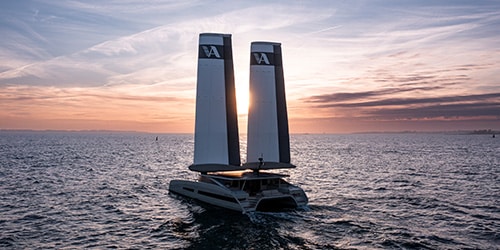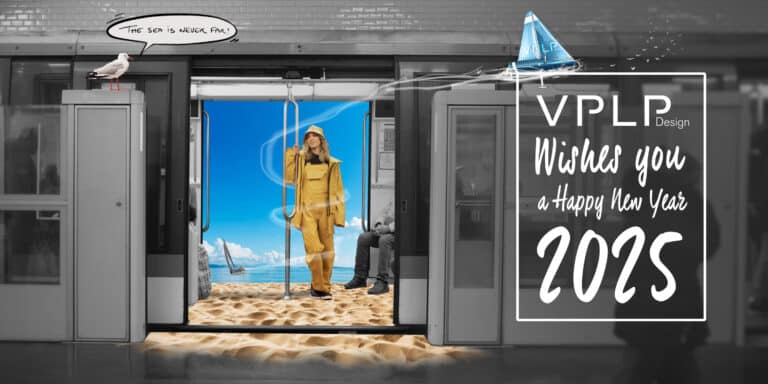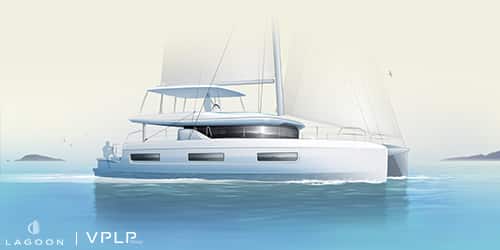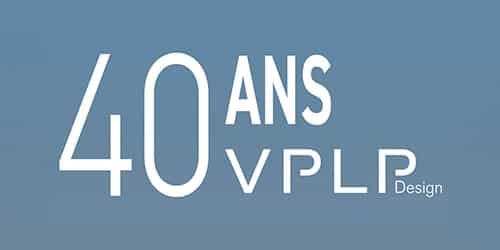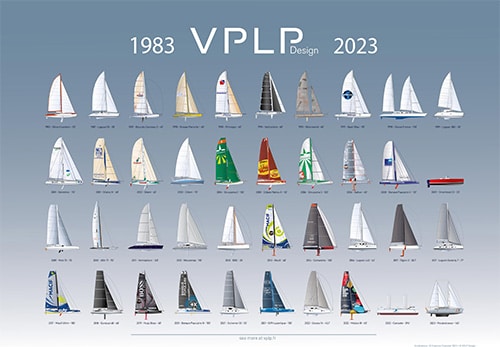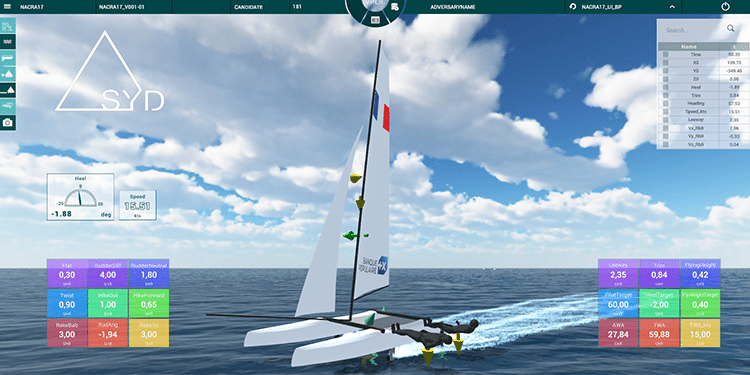This article was originally published in Mer et Marine, in partnership with the agency Sea to Sea.
Naval architecture firm VPLP Design, founded by Marc Van Peteghem and Vincent Lauriot Prévost, has always focused on innovation, performance and creating designs adapted to the constraints and demands of the sea. The company enjoys an international reputation in offshore racing. For many years now VPLP has been supporting the shipping industry by designing new kinds of professional vessels and promoting new technologies that allow the sector to change and decarbonize faster. Standing shoulder to shoulder with the ship-building sector, VPLP is playing its part in the invention of tomorrow’s maritime transport. In this article we talk to Simon WATIN, chairman of VPLP Design, who also oversees the firm’s maritime transport projects.
How does VPLP Design contribute to the maritime transport industry?
VPLP is a naval architecture firm founded almost forty years ago. We have a team of thirty-five spread over three agencies, in Paris, Nantes and Vannes. We work in three main fields, which are offshore racing, our traditional core business, cruising, both production-line models and luxury yachts, and of course shipping, which includes all the professional vessels that we design and optimize. We approach these various fields through the eyes of traditional naval architects but we also have the capacity to undertake structural, aerodynamic, hydrodynamic and performance analyses. We have an industrial design team too. This allows us to think about ship design in terms of usage and tackle functional and regulatory constraints very early on in a project. Our work involves applying our expertise to the maritime sector in order to imagine and design a new breed of professional vessel. Our five-strong team is dedicated to maritime projects and has the capacity to draft, design and analyse innovative vessels that can rise to the challenges of the sector. We are endeavouring to accomplish a transfer of expertise and technology that will contribute to the decarbonization of shipping, in particular through the use of wingsail propulsion and hydrofoils.
Why wind propulsion and why now?
This isn’t a new subject for VPLP. We’ve been working on this for over a decade, informing and encouraging players in the shipping business on the use of wind power in varying degrees of importance, such as auxiliary power or main propulsion. It all began with the design of a sixty-eight-metre rigid wingsail for the trimaran BMW Oracle, which VPLP also designed and which won the America’s Cup in 2010. Several years of R&D, including an initial twenty-one-metre prototype Oceanwings® in 2016, resulted in the construction of the pre-manufacturing OW 3.2 with a surface area of 32 m². It also led to the creation of the company Ayro in 2018. Currently, the Oceanwings® OW 3.6.3 (363 m²) are scheduled to be installed on the first cargo ship powered by rigid wingsails.

All the avenues we are exploring with those who operate, build, equip and finance these ships are centred on determining what a ship powered by the wind should be and what a modern sail or wind engine suitable for merchant shipping could be. We won’t be returning to the days of the sailing navy with square sails and ropes everywhere! There is a need for technologies and solutions for harnessing the power of the wind to mechanically reduce propulsive power, fuel consumption and carbon emissions. VPLP Design has supported, alongside the French Maritime Cluster and the rest of the sector, the coalition to promote the transition of the maritime sector to renewable power since its inception. We are also involved in the new MEET2050 Institute, which aims to encourage the proliferation of concept boats which use decarbonized energies and alternative technologies. We are also members of the International Windship Association (IWSA) and the non-profit organization Wind Ship. We offer an overview and the technological building blocks in a context that is developing fast because of the need to change and the pressures linked to climate-related issues and reducing the impact of carbon emissions. Major players in the maritime sector are now interested in wind propulsion. It’s an available solution and a renewable energy, and free. We are bringing to this “new market” a complementary layer of technology derived from our experience. The maritime sector is ready and VPLP has been ready to accompany its transition for a long time.
What is your expertise based on, and what are the most promising technologies?
In practical terms, we have solid technical expertise in using the wind and sails, designing and analysing the various sail-based solutions, and finding the one most suitable to the boat’s purpose in terms of price, stability, complexity and impact on its commercial operations whatever they may be. Another technical point for which we can claim a real expertise, and one that we wish to develop on more specialist projects, is the use of foils on lighter, high-speed vessels. They free the hull from the clutches of hydrodynamic drag so that the boat can fly above the water and halve her fuel consumption at high speeds.
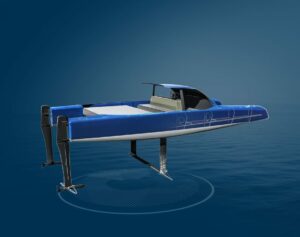
Lastly, another technological building block that we are pushing with our experience in racing and cruising is the use of composites in certain aspects of working boats, mostly with a view to make weight savings, to increase lightness and thus reduce fuel consumption. As for racing projects, we have always been innovative and trailblazers when it comes to our capacity to push lighter, more powerful boats with a greater capacity to carry sail while placing the emphasis on simplicity. It’s this kind of design which we believe we can apply successfully to working boats. Lighter, simpler and more efficient boats in the current context of the need to reduce our emissions: that’s what we need to aim for in order to invent tomorrow’s maritime transport.
What are VPLP Design’s main projects in the maritime sector currently?
The key project which will soon see the light of day, and of which we are very proud, is Canopée, the first large commercial vessel to harness the power of the wind. This 120-metre RORO vessel is scheduled for launch at the end of the year and will be transporting parts of the Ariane 6 rocket. It really is the culmination of VPLP’s long-term approach, and one that gave rise to the creation of Ayro, a company which is now firmly established in its own right. Ayro builds and markets the rigid wingsails Oceanwings®, these wind engines which we have been working on since 2010.
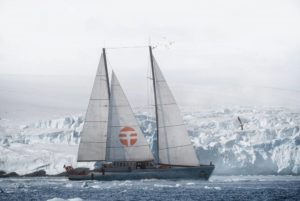
We have also been working on the Perseverance, a forty-metre aluminium sailing ship designed for exploration and supply work in the polar regions. This dual-purpose vessel, which uses wind as its main propulsive power, can carry several tons of equipment and perform scientific surveys for the future oceanographic station Polar Pod. We designed every aspect of her in collaboration with Olivier Petit who was also the architect of the Tara (formerly Antarctica). She’s a thoroughbred sailing ship, a two-masted schooner with classic sails, which we designed for simplicity in her rigging and lines. We did an enormous amount of work on ensuring her ease of use and dissociating her supply functions on the one hand, including the launching and recovery of the inflatable dinghies, and on the other hand, the operation of the sails.
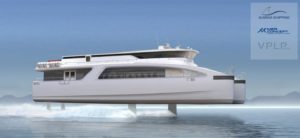
The most recent project is the Fast Foiling Ferry or F3 (pronounced “F Cube”) which we’ve been working on with Alwena Shipping and Mer Concept over several months. These are two versions of a foiling ferry which will be able to operate at high speed above the surface of the water: 35 knots for one version and 45 knots for the other. The goal is to provide a passenger transport service which makes significant fuel savings, in the order of 40% compared to a traditional catamaran travelling at a similar speed.
You will have a stand at Euromaritime in Marseilles, what will you be exhibiting?
Euromaritime is a major trade show for the professionals of the maritime sector and we will be exhibiting alongside Alwena Shipping. It is important for us to be visible, to meet the shippers, the shipowners and the industrial players in order to offer them our expertise. We will be presenting the F3 foiling ferry project in two versions, one version being a thirty-metre vessel for professional offshore transport and the other being a twenty-four-metre vessel aimed at urban transport in coastal cities.
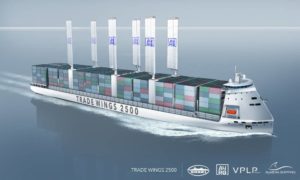
We will also be presenting Trade Wings 2500, a preliminary project of a wing-powered container ship of 2500 TEU for which we have obtained the approval in principle (AIP) from Bureau Veritas. We produced it in collaboration with Alwena Shipping, Ayro (for the wings), and CSSC-SDARI, a leading container-ship designer in China. It’s the culmination of a collaborative effort with very complementary players who allow us to develop a ship design that is suitable for the needs of professional ship operators, and which can make real fuel savings by using wingsails. We bring to the table an analysis of the ship’s capacity and loading and unloading operations in port – which are extremely optimized on modern container ships – in order to integrate the wingsails into the ship with as little impact as possible on the vessel’s core activities. We have mutualized the structure of the wings and the structure of the ship and created an elevator system to eliminate the wings during operations alongside. We have endeavoured to design a new type of vessel which satisfies the demands of this global optimized logistics chain, and offers real gains in terms of reducing fuel consumption and carbon emissions.
We are very active in the sail-power sector. Our presence at Euromaritime is another opportunity to show our real determination to promote these technologies in the shipping industry and beyond, our vision of a decarbonized maritime sector.
